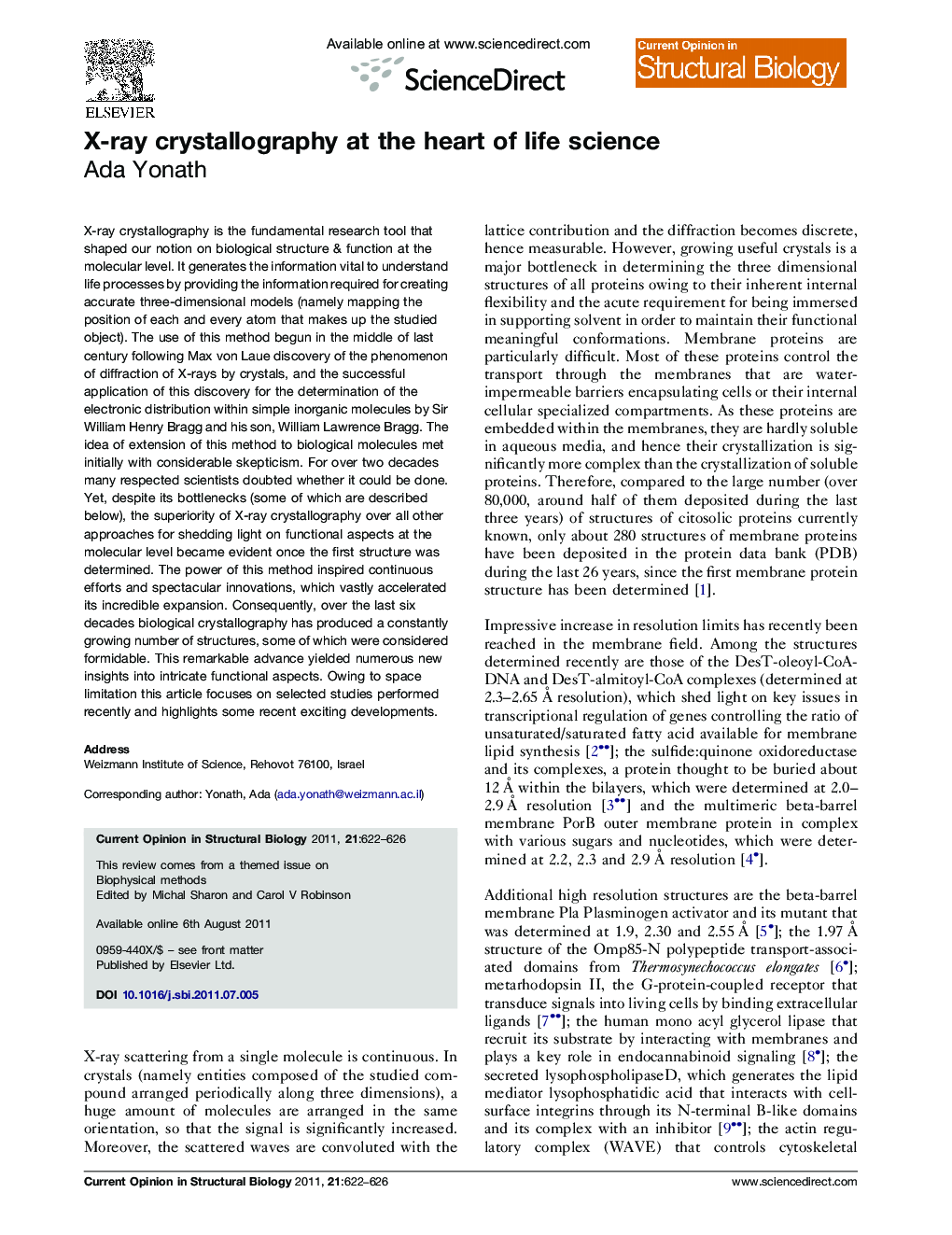| Article ID | Journal | Published Year | Pages | File Type |
|---|---|---|---|---|
| 1979239 | Current Opinion in Structural Biology | 2011 | 5 Pages |
X-ray crystallography is the fundamental research tool that shaped our notion on biological structure & function at the molecular level. It generates the information vital to understand life processes by providing the information required for creating accurate three-dimensional models (namely mapping the position of each and every atom that makes up the studied object). The use of this method begun in the middle of last century following Max von Laue discovery of the phenomenon of diffraction of X-rays by crystals, and the successful application of this discovery for the determination of the electronic distribution within simple inorganic molecules by Sir William Henry Bragg and his son, William Lawrence Bragg. The idea of extension of this method to biological molecules met initially with considerable skepticism. For over two decades many respected scientists doubted whether it could be done. Yet, despite its bottlenecks (some of which are described below), the superiority of X-ray crystallography over all other approaches for shedding light on functional aspects at the molecular level became evident once the first structure was determined. The power of this method inspired continuous efforts and spectacular innovations, which vastly accelerated its incredible expansion. Consequently, over the last six decades biological crystallography has produced a constantly growing number of structures, some of which were considered formidable. This remarkable advance yielded numerous new insights into intricate functional aspects. Owing to space limitation this article focuses on selected studies performed recently and highlights some recent exciting developments.
► Several very high resolution structures of proteins, including membrane proteins have been deciphered. ► New structures range from the smallest nano-object to eukaryotic ribosomes. ► Exciting opportunities in structural biology are emerging by new technologies.
